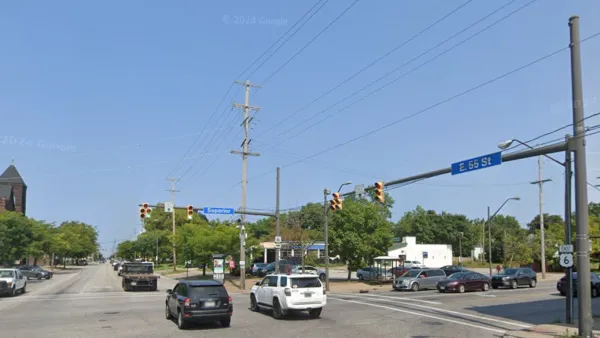Paris, Barcelona, New York City...Cleveland? Like the oft-hidden urban oasis that are the subject of this article, you may come across some surprises in Crai S. Bower's list of the best cities for pocket parks.
"We discover them in the strangest of places, petite verdant secrets along bustling streets, in forgotten neighborhoods," says Bower. "So tiny that 'pocket' is often modified as 'vest pocket,' these pastoral postage stamps invite us to slip out of the urban dimensions, cast in steel and concrete, and experience a misty waterfall, a subtle bistro chair or an arboreal oasis. Recent studies suggest that far from being frivolous afterthoughts, the sewing of pocket parks across a metropolis produces a quantifiable positive effect on the citizenry."
Among the cities identified by Bower as having the best pocket parks are New York, home to Gramercy Park, which "might be the most famous pocket park in the world," and Barcelona, whose "Jardins" and municipal parks cover 10 percent of the city.
How did Celeveland find itself among such regal company? "Long the source of Rust Belt humor, Cleveland has been greening up fast in recent years, creating Metroparks: 14 reservations — many recapturing former industrial zones — that create a greenway encircling the city. The city’s cultural gardens are also worth a visit; the landscaping contains plantings from more than 30 countries, including Albania and India, as well as an African-American and American Legion garden. Clevelanders also can take advantage of several pocket parks downtown, strolling through Fort Huntington, Lincoln and Settler’s Landing parks, a welcome green break from a busy day in this industrial city."
FULL STORY: Best cities for pocket parks

Planetizen Federal Action Tracker
A weekly monitor of how Trump’s orders and actions are impacting planners and planning in America.

Chicago’s Ghost Rails
Just beneath the surface of the modern city lie the remnants of its expansive early 20th-century streetcar system.

San Antonio and Austin are Fusing Into one Massive Megaregion
The region spanning the two central Texas cities is growing fast, posing challenges for local infrastructure and water supplies.

Since Zion's Shuttles Went Electric “The Smog is Gone”
Visitors to Zion National Park can enjoy the canyon via the nation’s first fully electric park shuttle system.

Trump Distributing DOT Safety Funds at 1/10 Rate of Biden
Funds for Safe Streets and other transportation safety and equity programs are being held up by administrative reviews and conflicts with the Trump administration’s priorities.

German Cities Subsidize Taxis for Women Amid Wave of Violence
Free or low-cost taxi rides can help women navigate cities more safely, but critics say the programs don't address the root causes of violence against women.
Urban Design for Planners 1: Software Tools
This six-course series explores essential urban design concepts using open source software and equips planners with the tools they need to participate fully in the urban design process.
Planning for Universal Design
Learn the tools for implementing Universal Design in planning regulations.
planning NEXT
Appalachian Highlands Housing Partners
Mpact (founded as Rail~Volution)
City of Camden Redevelopment Agency
City of Astoria
City of Portland
City of Laramie



























